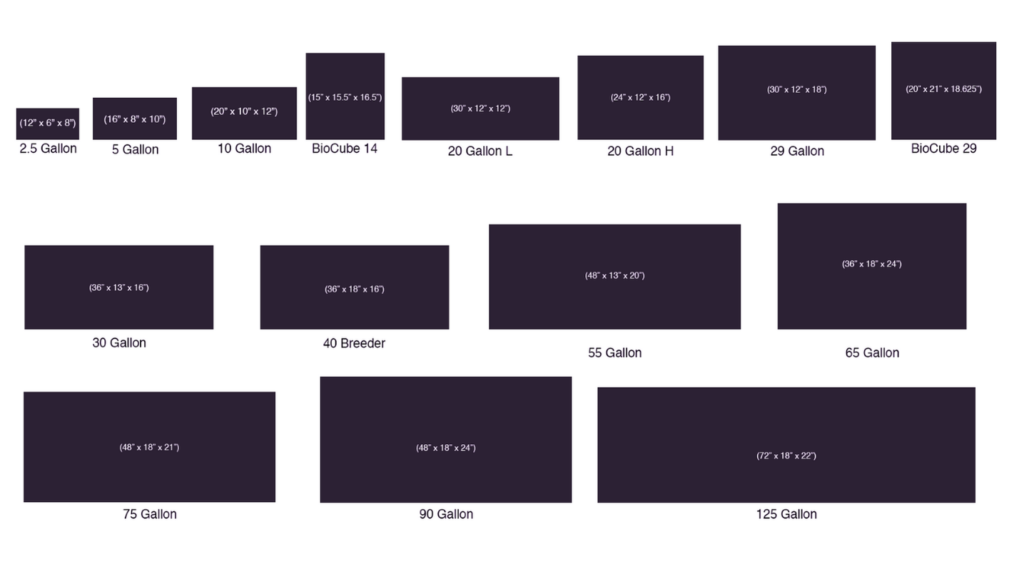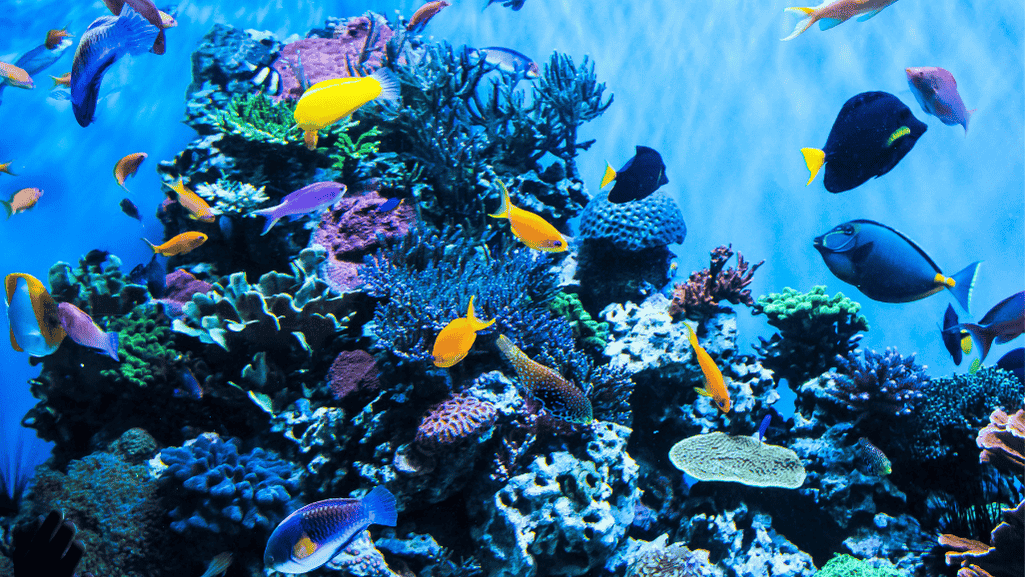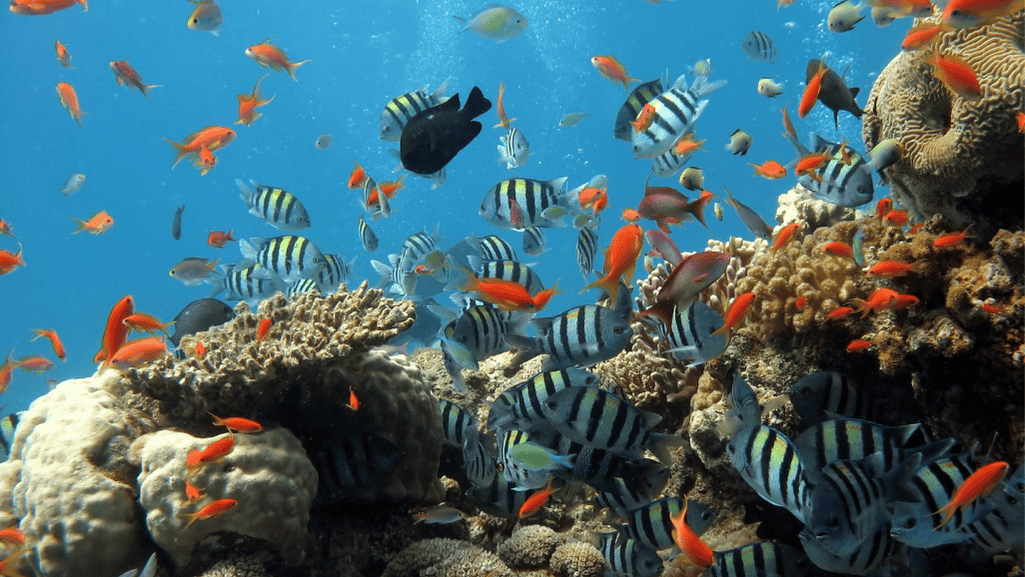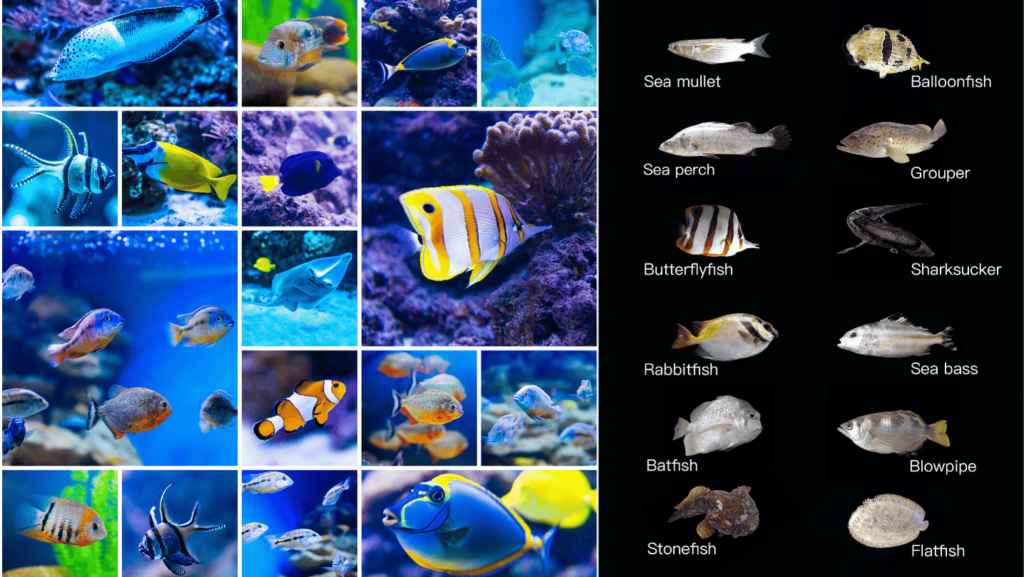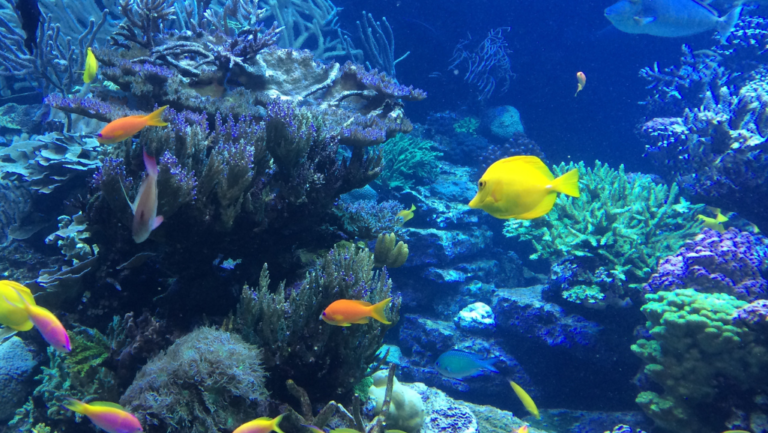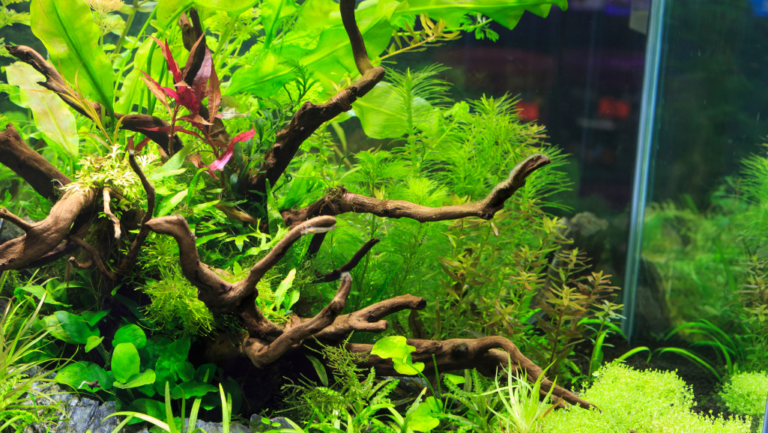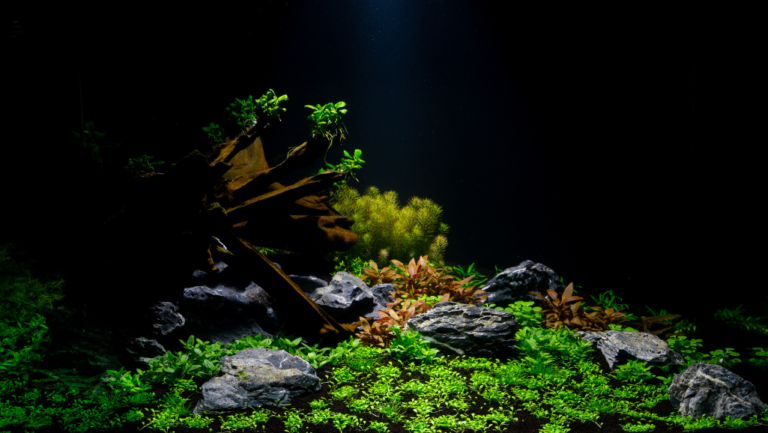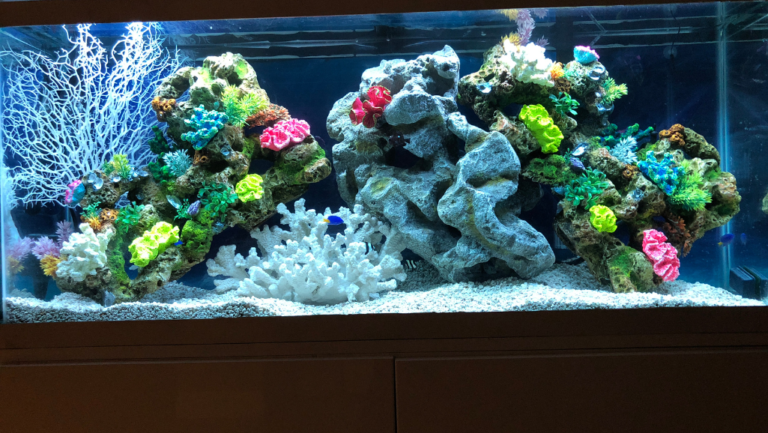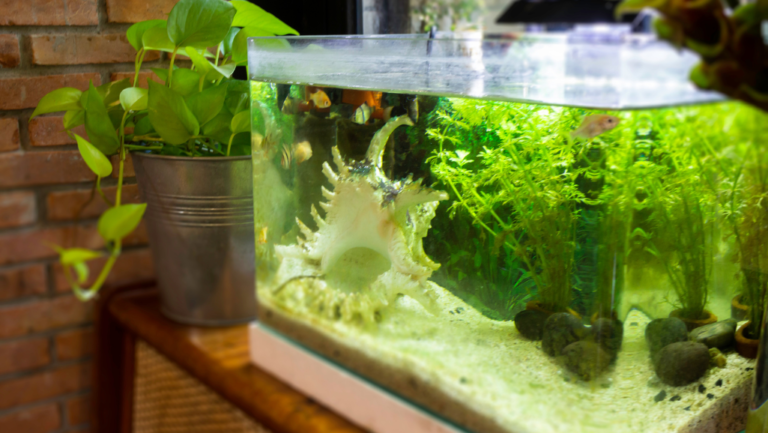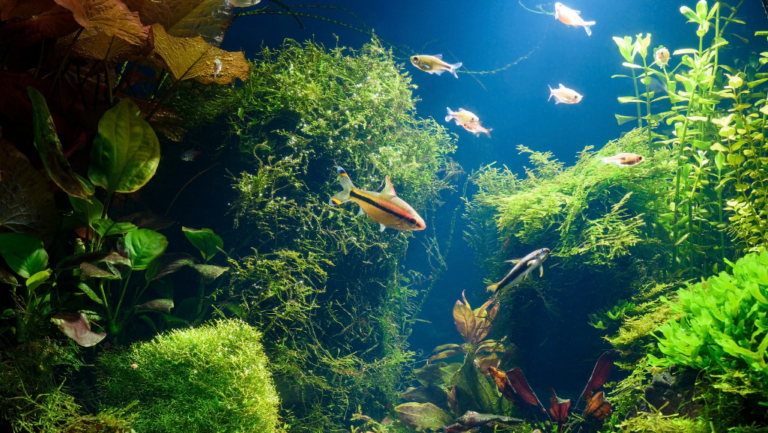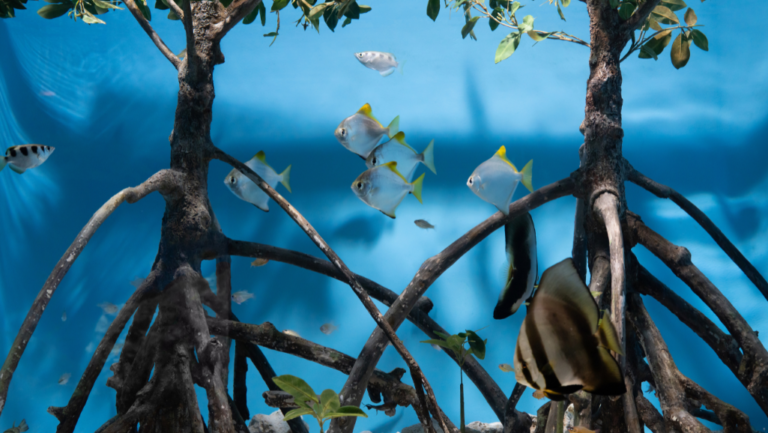Setting up an aquarium is exciting, but picking the right fish size is key. The size of your tank and its volume matter a lot. They help decide how big your fish can get.
Choosing the right fish size is important for their health and your tank’s balance. It’s not just about how many fish you have. It’s also about their size compared to the space they have. This guide will help you pick the right fish for your tank, thinking about their size now and when they grow up.
We’ll look at how tank size affects your choices. We’ll also talk about how to figure out your tank’s volume and managing fish growth. By the end of this guide, you’ll know how to pick the right fish for your tank. This will make your tank healthy and beautiful.
Key Takeaways
- Fish size directly impacts tank health and aesthetics
- Consider both current and adult fish sizes when stocking
- Tank dimensions and volume determine suitable fish lengths
- Proper sizing prevents overcrowding and stress
- Regular monitoring of fish growth is essential
- Balance between fish size and available space is crucial
Understanding the Importance of Fish Size in Aquarium Management
Fish size is key to a healthy aquarium. It affects fish health, water quality, and how the tank looks.
Impact on Fish Health and Well-being
The size of adult fish matters a lot. They need room to swim and behave naturally. Too many fish can cause stress and slow growth.
By choosing the right size for your tank, you help your fish thrive.
Effects on Water Quality and Filtration
The size of fish affects water quality. Bigger fish make more waste, which means your tank needs better filters. It’s important to match fish size with tank size for clean water.
| Fish Size | Waste Production | Filtration Needs |
|---|---|---|
| Small (1-2 inches) | Low | Basic filtration |
| Medium (3-6 inches) | Moderate | Enhanced filtration |
| Large (7+ inches) | High | Advanced filtration systems |
Influence on Tank Aesthetics and Design
Fish size affects how your tank looks. Big fish can be stunning, while small ones create lively schools. The right mix of sizes makes your tank beautiful.
Understanding fish size and tank capacity helps create great aquariums. These environments are both beautiful and healthy for fish.
Aquarium Fish Size: Key Factors to Consider
Choosing the right fish size for your aquarium is key to a healthy environment. Knowing the tank space and fish sizes is important. It ensures your fish live well in their new home.
- Tank dimensions
- Fish species adult size
- Swimming patterns
- Territorial behavior
Doing research is essential when picking fish. Many grow bigger than they look as juveniles. Always check a fish size guide before buying. This avoids overcrowding and stress in your tank.
| Fish Type | Adult Size (inches) | Minimum Tank Size (gallons) |
|---|---|---|
| Neon Tetra | 1.5 | 10 |
| Angelfish | 6 | 30 |
| Oscar | 12 | 75 |
Larger fish need more room and make more waste, which can harm water quality. Smaller fish let you have more variety in your tank. By thinking about these points, you’ll make a great place for your fish to live.
Calculating Tank Capacity and Fish Stocking Levels
Finding the right number of fish for your tank is key to a healthy aquarium. It’s important to avoid overstocking and ensure enough space for schooling fish. Let’s look at how to figure out your tank’s capacity and how many fish you can have.
The Inch-Per-Gallon Rule: Pros and Cons
The inch-per-gallon rule is a simple way to estimate fish stocking. It says one inch of fish per gallon of water. But, it has its downsides. It doesn’t consider fish shape, waste, or specific needs.
For example, a 4-inch goldfish needs more room than four 1-inch neon tetras. This rule is not perfect for all fish.
Advanced Methods for Determining Tank Capacity
More precise methods look at more than just fish length. They include:
- Fish bioload (waste production)
- Swimming habits
- Adult size
- Tank surface area
- Filtration capacity
These factors help create a balanced environment. They improve compatible tank mates and fish compatibility.
Tools and Calculators for Accurate Stocking
Online calculators can help figure out the right number of fish. They consider many factors for more accurate advice. But, remember, these are just guidelines.
Always do your research and talk to experienced aquarists for the best advice.
Using these advanced methods and tools, you can make a thriving aquarium. Your fish will have plenty of space to thrive.
Common Freshwater Fish Sizes and Their Tank Requirements
Choosing the right fish for your tank means knowing their size and space needs. Let’s look at some popular fish and how much room they need.
Tetras are colorful and great for beginners. They grow to 1-2 inches, perfect for tanks of 10-20 gallons. Guppies, another favorite, rarely get bigger than 2 inches and do well in similar tanks.
For bigger fish, angelfish can grow up to 6 inches long and 8 inches tall. They need at least a 20-gallon tank to fit their big fins and swimming style.
| Fish Species | Adult Size (inches) | Minimum Tank Size (gallons) |
|---|---|---|
| Neon Tetra | 1.5 | 10 |
| Guppy | 2 | 10 |
| Angelfish | 6-8 | 20 |
| Betta | 2.5 | 5 |
| Goldfish | 6-12 | 30 |
Some fish grow faster than others. Goldfish can grow up to 12 inches and need tanks of 30 gallons or more. Bettas, even though small, do best in 5-gallon tanks.
Knowing the size of your fish helps create a healthy home for them. Make sure to research each fish’s needs to give them enough space to swim and grow.
Popular Saltwater Fish Dimensions and Suitable Tank Sizes
Saltwater aquariums are home to a wide variety of marine life. Choosing the right fish for your tank is important. You need to think about the size of the fish and the tank’s capacity. Knowing the average sizes of fish helps create a healthy underwater world.
Small Reef Fish and Nano Tank Options
Nano tanks, under 30 gallons, are great for small reef fish. Fish like clownfish, gobies, and firefish are popular. They are usually under 3 inches long. These tanks create mini reef worlds, showing off bright colors in a small space.
Medium-sized Marine Fish and Their Space Needs
Mid-sized fish, like angelfish, tangs, and butterflyfish, need tanks of 55 to 100 gallons. These fish grow between 5 to 12 inches. They need lots of room to swim and places to hide. The right tank size helps them grow well and stay healthy.
Large Saltwater Species and Appropriate Tank Volumes
Big fish, like groupers, lionfish, and some wrasses, need lots of space. Tanks over 100 gallons are needed for these large fish. They can grow over 12 inches long. It’s important to do your research before getting these big fish, as they affect the tank’s water quality and balance.
| Fish Category | Average Size | Recommended Tank Volume |
|---|---|---|
| Small Reef Fish | 1-3 inches | 10-30 gallons |
| Medium Marine Fish | 5-12 inches | 55-100 gallons |
| Large Saltwater Species | 12+ inches | 100+ gallons |
Choosing the right tank size is key to a healthy marine ecosystem. These are general guidelines. Always check the specific needs of each fish for the best aquarium experience.
Growth Rates and Adult Sizes: Planning for the Future
Planning for your aquarium’s future means understanding how fish grow and their adult sizes. Many people forget this, leading to overcrowding. Knowing your fish species adult sizes is crucial. It helps keep the right number of fish and prevents overcrowding.
Different fish grow at different rates. Some grow fast, reaching full size in months. Others take years. This affects your tank’s size and how well fish get along. To keep your tank healthy, think about these things:
- Research adult sizes of chosen fish
- Factor in growth rates when planning
- Adjust stocking levels as fish mature
- Regularly assess tank space requirements
A fish that fits well today might grow too big tomorrow. Planning ahead helps create a balanced and beautiful tank. This way, you keep water quality good, reduce fish stress, and make your tank look great.
“A well-planned aquarium is a joy for years to come, while a poorly planned one becomes a source of stress.”
Keep up with your fish’s growth and be ready to adjust. This way, your aquarium stays a stunning, balanced home for your fish as they grow.
Avoiding Overcrowding: Signs and Prevention Strategies
Keeping the right fish tank size and managing the aquarium bioload is key for a healthy tank. Overcrowding can cause stress, disease, and poor water quality. Let’s look at how to spot and stop this common problem.
Recognizing an Overstocked Aquarium
An overstocked tank often shows these signs:
- Rapid decline in water quality
- Increased aggression among fish
- Stunted fish growth potential
- Frequent fish illnesses
Strategies to Prevent Tank Overcrowding
To avoid overcrowding, consider these strategies:
- Monitor fish body measurements regularly
- Use a reliable aquarium bioload management system
- Plan for fish growth potential when stocking
- Perform regular water tests and changes
Proper disease prevention in aquariums is key for fish health and avoiding overcrowding issues.
Rehoming Options for Outgrown Fish
When fish outgrow their tank, consider these rehoming options:
| Option | Pros | Cons |
|---|---|---|
| Local fish stores | Easy, often accept various species | May not offer compensation |
| Online aquarium forums | Connect with experienced hobbyists | Shipping can be stressful for fish |
| Public aquariums | Professional care, educational opportunity | Limited acceptance, strict requirements |
By staying vigilant and proactive, you can keep your home aquarium balanced and thriving.
Compatibility and Space: Choosing the Right Tank Mates
Choosing the right tank mates is key for a healthy aquarium. The size of the fish matters a lot. Smaller fish like to school, while bigger ones need more room.
Saltwater fish come in all sizes. Some tiny ones fit in small tanks, but bigger ones need lots of space. For freshwater tanks, knowing the size of cichlids helps avoid fights.
Think about these things when picking fish:
- How they swim (top, middle, bottom)
- How aggressive they are
- How big they get and how fast
- What kind of water they like
In a 30-gallon tank, you could mix:
| Species | Quantity | Adult Size |
|---|---|---|
| Neon Tetras | 8-10 | 1.5 inches |
| Corydoras Catfish | 4-6 | 2-3 inches |
| Dwarf Gourami | 1 pair | 2-3 inches |
Remember, picking the right fish is an art. It’s about size, behavior, and space. By thinking about these, you’ll make a peaceful underwater world.
Specialized Tanks: Size Considerations for Specific Fish Species
Creating the perfect home for your aquatic friends requires careful planning, especially when it comes to tank size. Different fish species have unique space needs based on their growth patterns and adult sizes. Let’s explore some popular choices and their specific requirements.
Goldfish are beloved pets, but many owners underestimate their space needs. A goldfish growth chart reveals that these fish can grow up to 12 inches in length. For a single goldfish, a 20-gallon tank is the minimum, with an additional 10 gallons for each extra fish.
Angelfish captivate with their elegant fins and striking patterns. The angelfish size range varies, with adults reaching up to 6 inches in body height and 8 inches in length. A 30-gallon tank is suitable for a pair, while larger groups require at least 55 gallons.
Discus fish, known for their vibrant colors, need ample space to thrive. The discus fish adult size can reach 8 inches in diameter. A group of 5-6 discus requires a minimum of 75 gallons to accommodate their size and social needs.
| Fish Species | Adult Size | Minimum Tank Size |
|---|---|---|
| Goldfish | Up to 12 inches | 20 gallons (single fish) |
| Angelfish | 6-8 inches | 30 gallons (pair) |
| Discus | 8 inches diameter | 75 gallons (group of 5-6) |
For those interested in smaller species, a tetra fish size chart can be helpful. Most tetras stay under 2 inches, making them ideal for nano tanks. A 10-gallon aquarium can comfortably house a small school of 6-8 tetras.
Remember, these are general guidelines. Always research the specific needs of your chosen fish species to ensure they have the space they need to grow and thrive in your aquarium.
Conclusion
Choosing the right fish size for your aquarium is key for a thriving underwater world. Knowing your tank’s capacity helps create a balanced ecosystem. This allows fish to grow and thrive.
Each fish species has its own space needs. This impacts the health of your tank. From tiny tetras to larger goldfish, their size matters.
Planning is crucial when picking fish. Watching how your fish grow is important. A big enough tank looks better and keeps water quality high.
Starting your aquarium journey? Learn about fish sizes and their needs. Whether it’s neon tetras or angelfish, the right size is vital. With the right knowledge, you’ll have a stunning underwater world that brings joy for years.

